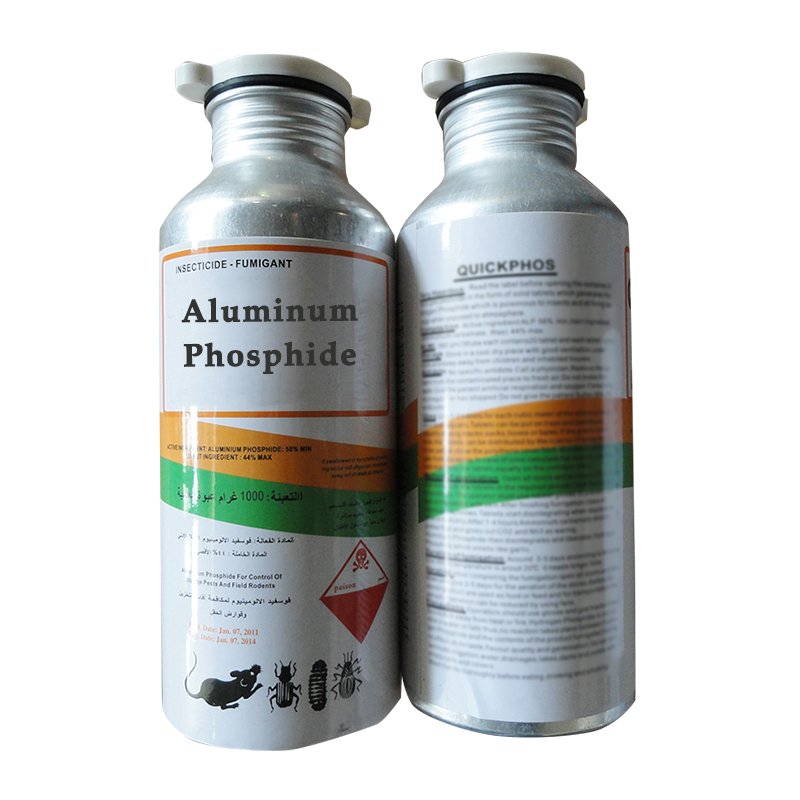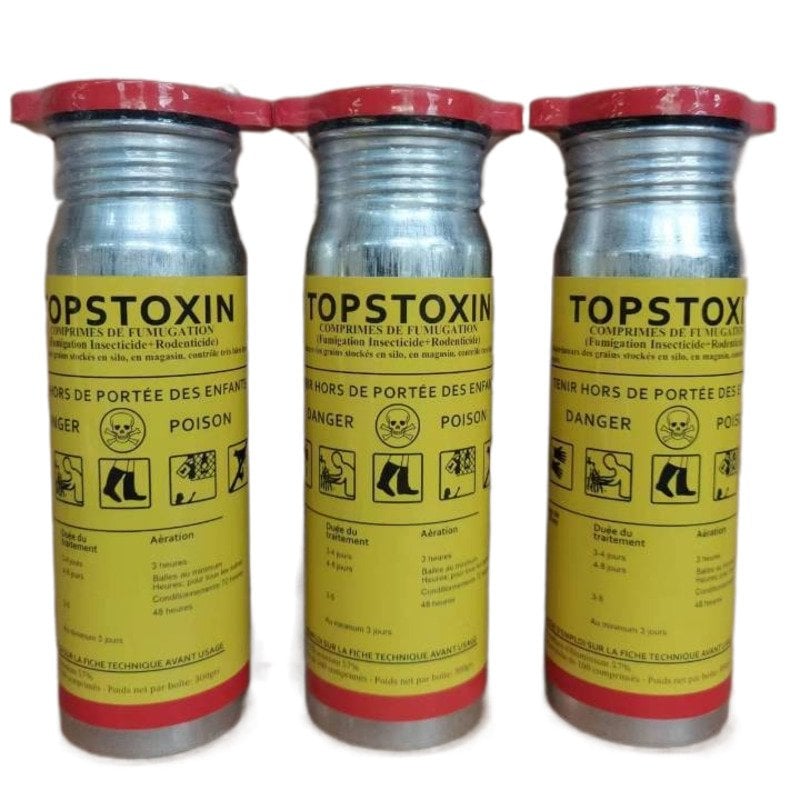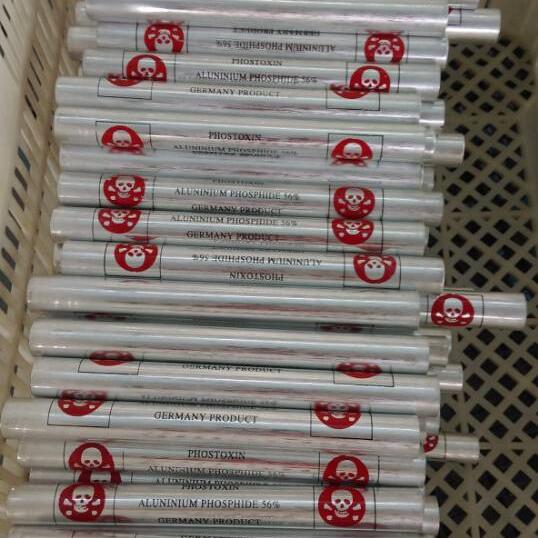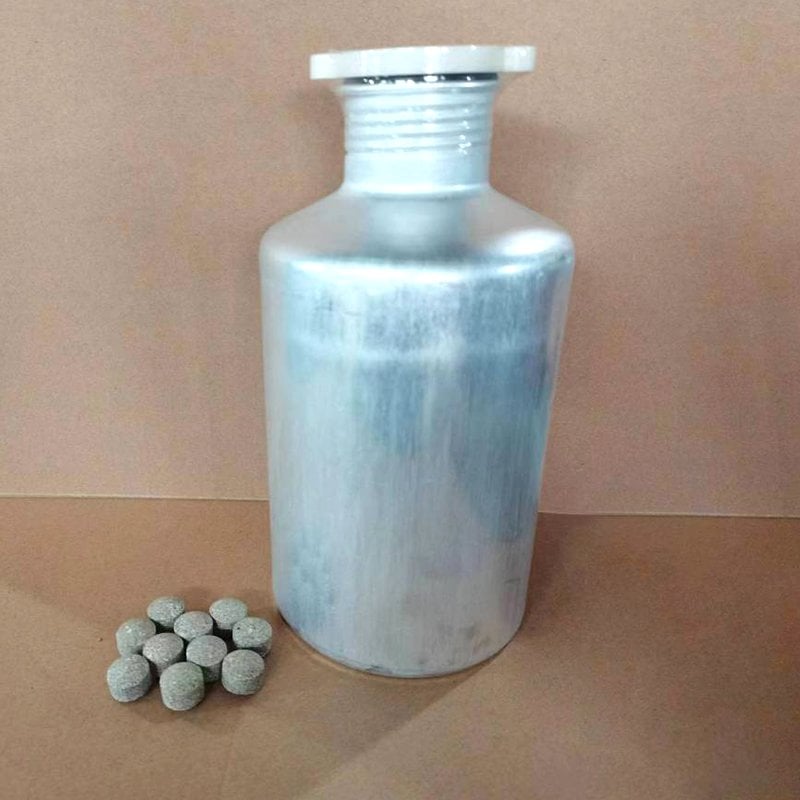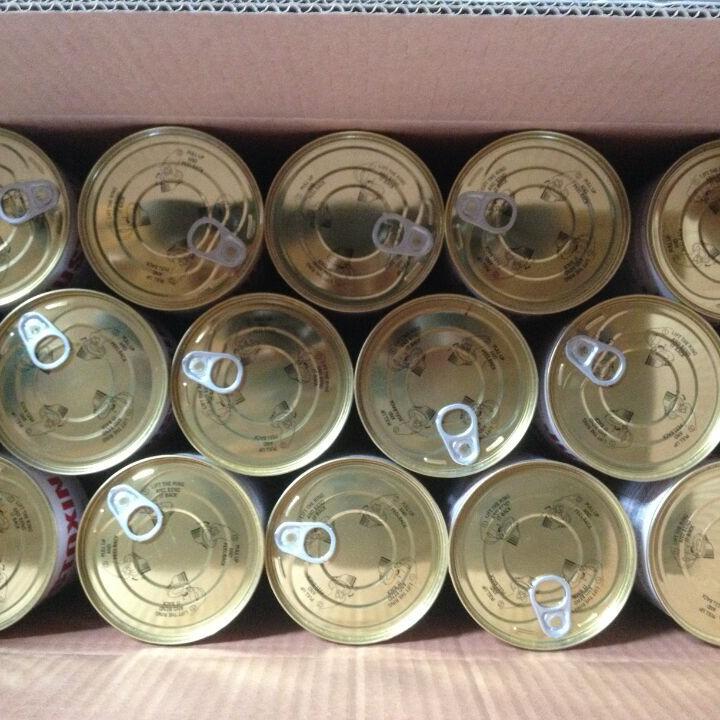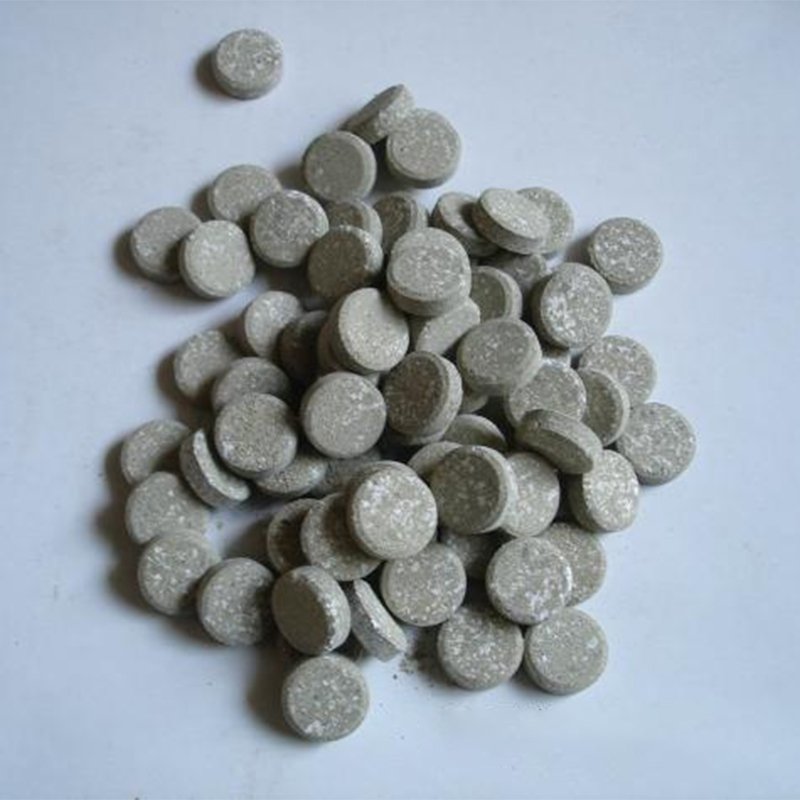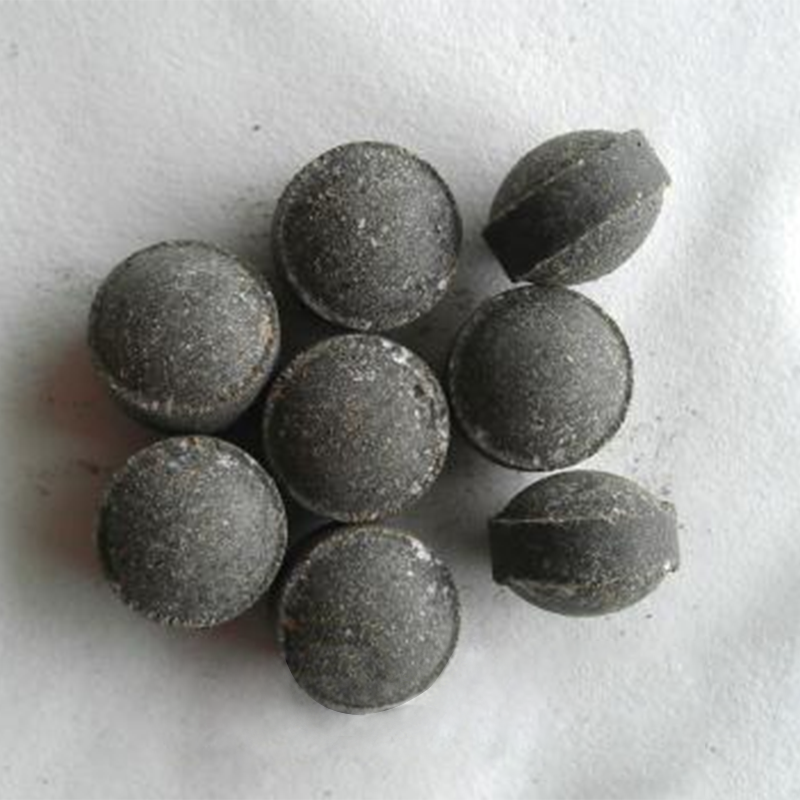Zinc Phosphide vs Aluminum Phosphide
Zinc Phosphide
Zinc Phosphide is a widely used rodenticide designed for controlling rodents such as rats, mice, gophers, and voles in both agricultural and non-agricultural settings. When ingested by rodents, Zinc Phosphide reacts with stomach acid to produce phosphine gas, which is lethal to the target animals. It is commonly used in baits to protect crops, stored grain, and other areas where rodents pose a problem.
Mode of Action
When rodents consume bait containing Zinc Phosphide, it reacts with the stomach acids, releasing phosphine gas, which is rapidly toxic to the target animals. The phosphine gas disrupts cellular respiration, leading to suffocation and death. Zinc Phosphide works quickly and is often used as a single-dose bait, making it highly effective for managing rodent populations.
Applications
| Crops/Areas | Target Rodents | Dosage/Rate | Critical Comments |
|---|---|---|---|
| Agricultural Fields | Rats, mice, voles, gophers | 2-4 kg/ha | Apply bait near rodent burrows or nesting areas in the field. Ensure bait is kept dry and protected from weather. |
| Stored Grains | Rats, mice | 2-4 kg/ha | Place bait stations around grain storage facilities and ensure minimal access for non-target animals. |
| Non-Crop Areas | Rodents in industrial sites, roadways | 2-5 kg/ha | Place bait stations strategically in non-crop areas for targeted rodent control. |
| Orchards | Ground squirrels, gophers | 2-3 kg/ha | Apply near burrows and nests for control of gophers and squirrels damaging orchard trees. |
Benefits
- Rapid Action: Provides quick and effective control of rodent populations with a single feeding.
- Selective: Zinc Phosphide primarily targets rodents and is effective in managing infestations in agricultural and non-agricultural settings.
- Cost-Effective: Because it works as a single-dose rodenticide, less product is needed compared to multi-dose alternatives.
- Versatile Application: Suitable for use in fields, orchards, storage facilities, and non-crop areas.
Aluminum Phosphide Fumigant
Aluminum Phosphide is a highly effective fumigant used to control insects, rodents, and pests such as gophers, moles, and rats in stored products, agricultural fields, and non-crop areas. It releases phosphine gas (PH3) upon contact with moisture in the air, which is highly toxic to pests. Aluminum Phosphide is available in the form of tablets, pellets, or granules and is commonly used for fumigating stored grains, warehouses, shipping containers, and gopher burrows.
- Active Ingredient: Aluminum Phosphide
- Formulation: Aluminum Phosphide 56% 57% Tablets, Pellets
- Label and Packaging: Customizable packaging available based on specific needs
Mode of Action
Aluminum Phosphide reacts with moisture in the air or soil to release phosphine gas (PH3), which is highly toxic to pests. The gas is absorbed into the pests’ bloodstream, disrupting cellular respiration, leading to rapid death. This fumigant is widely used to manage pests in storage facilities and grain silos, and to control rodents and burrowing animals like gophers.
Applications
| Crops/Areas | Target Pests | Dosage/Rate | Critical Comments |
|---|---|---|---|
| Stored Grains | Insects (weevils, beetles, moths), rodents | 3-5 tablets/ton | Apply the fumigant in a well-sealed storage area for best results. Ensure proper ventilation after treatment. |
| Buildings & Warehouses | Bed bugs, cockroaches, termites | 1-2 tablets per cubic meter | Seal the treated area completely for effective fumigation. Ensure that non-target species are not exposed. |
| Gopher Control (Fields) | Gophers, moles, rats | 1-2 tablets per burrow | Place tablets deep inside burrows, sealing the openings to trap the gas. |
| Shipping Containers | Stored product pests (insects and rodents) | 3-5 tablets per container | Effective for protecting goods during shipping. Ensure containers are well sealed to contain the gas. |
Benefits
- Fast-Acting Fumigant: Releases phosphine gas, which provides rapid control of a wide range of pests.
- Versatile Use: Effective for stored grain protection, structural fumigation, and rodent control in agricultural fields.
- Cost-Effective: A powerful solution that works at low application rates, reducing the overall cost of pest control.
- Highly Penetrative: The gas can reach deep into cracks, crevices, and burrows, ensuring complete fumigation.
Similarities : Zinc and Aluminum Phosphide
- Phosphine Gas Release:
- Both Zinc Phosphide and Aluminum Phosphide release phosphine gas (PH₃), which is the toxic agent responsible for killing rodents and other pests. Phosphine gas disrupts cellular respiration, leading to respiratory failure and death.
- Toxicity:
- Both are highly toxic to rodents, insects, and other target pests. They are also extremely dangerous to humans and animals if inhaled or ingested, requiring careful handling and application.
- Target Pests:
- Both are used to control rodents and other pests. Zinc Phosphide is used primarily as a rodenticide, while Aluminum Phosphide is used to control both rodents and insects in enclosed spaces.
- Chemical Reaction with Moisture:
- Both chemicals react with moisture or acids (in the environment or stomach) to release phosphine gas. Zinc Phosphide reacts with stomach acid when ingested, and Aluminum Phosphide reacts with atmospheric moisture or water.
- No Residue:
- After use, both compounds do not leave lasting toxic residues. Phosphine gas dissipates quickly, leaving no harmful chemicals behind in treated areas.
- Hazard to Non-Target Species:
- Both pose a risk to non-target species, such as pets, wildlife, and humans, through accidental exposure or secondary poisoning (when predators or scavengers consume poisoned rodents).
Differences Between : Zinc and Aluminum Phosphide
| Feature | Zinc Phosphide | Aluminum Phosphide |
|---|---|---|
| Primary Use | Rodenticide (bait form) | Fumigant for grain storage and rodent burrows |
| Form | Powder, typically mixed with food bait | Tablets, pellets, or granules used for fumigation |
| Mode of Action | Ingested by rodents, reacts with stomach acid to release phosphine gas | Reacts with moisture to release phosphine gas (used in closed spaces) |
| Application Areas | Open fields, orchards, urban environments | Enclosed spaces like grain silos, warehouses, and rodent burrows |
| Application Method | Bait that is ingested by rodents | Fumigant that releases gas in enclosed environments |
| Handling Requirements | Requires basic safety measures for bait application | Requires professional handling, protective gear, and strict safety protocols |
| Speed of Action | Fast-acting after ingestion (death occurs within hours) | Rapid release of gas in confined areas (death occurs quickly in enclosed spaces) |
| Environmental Impact | May degrade if exposed to moisture before ingestion, limiting effectiveness | Highly effective in humid or moist conditions (moisture triggers gas release) |
| Risk of Secondary Poisoning | Moderate to high risk of secondary poisoning if poisoned rodents are eaten by predators | Lower risk of secondary poisoning, as it is used in enclosed fumigated spaces |
| Effectiveness in Moisture | Less effective in moist conditions where bait can degrade | More effective in moist or humid conditions, as it triggers gas release for fumigation |
| Toxicity Control | Difficult to control exposure once rodents ingest the bait | More controlled fumigation, especially in confined spaces like grain silos |
| Regulations | Fewer regulatory restrictions than Aluminum Phosphide | More heavily regulated due to high toxicity and risk of gas inhalation |
Aluminum and Zinc Phosphide Poisoning
Aluminum Phosphide and Zinc Phosphide are highly toxic substances used as rodenticides and fumigants. Poisoning from these compounds can be severe and often fatal if not treated promptly. Both phosphides release phosphine gas (PH₃), which is responsible for the toxic effects. Below is a detailed discussion of the mechanisms of poisoning, symptoms, and management for both types of phosphide poisoning.
Aluminum Phosphide Poisoning
Mechanism of Toxicity
- Aluminum Phosphide (AlP) releases phosphine gas when it comes into contact with moisture or stomach acid. The gas is rapidly absorbed into the bloodstream and causes cellular toxicity by inhibiting cytochrome C oxidase, disrupting mitochondrial function and energy production (ATP synthesis).
- Phosphine gas is highly toxic, leading to multi-organ failure, severe oxidative stress, and tissue damage.
Symptoms of Aluminum Phosphide Poisoning
- Early symptoms (within minutes to hours of exposure):
- Nausea, vomiting (often with a garlic-like smell)
- Diarrhea and abdominal pain
- Shortness of breath, chest tightness
- Dizziness, weakness, fatigue
- Garlic-like odor in breath (from phosphine gas)
- Severe symptoms (hours to days after exposure):
- Hypotension (low blood pressure), circulatory shock
- Metabolic acidosis (build-up of acid in the body)
- Arrhythmias (irregular heartbeats) and myocarditis (heart inflammation)
- Acute respiratory distress syndrome (ARDS)
- Liver and kidney failure
- Coma or seizures
Fatal Dose
The lethal dose of aluminum phosphide is extremely low, with as little as 0.5 to 1 gram being enough to cause fatal poisoning in adults.
Treatment for Aluminum Phosphide Poisoning
- Supportive care is the mainstay of treatment, as there is no specific antidote for aluminum phosphide poisoning.
- Activated charcoal may be administered if the patient presents early (within 1-2 hours of ingestion), though it may have limited effectiveness due to the rapid release of phosphine gas.
- Intravenous fluids and vasopressors are used to manage hypotension and shock.
- Sodium bicarbonate may be administered to correct metabolic acidosis.
- Magnesium sulfate has been suggested in some studies to help stabilize the heart and reduce arrhythmias.
- Oxygen therapy or mechanical ventilation may be necessary in cases of respiratory distress.
- Close monitoring of cardiac and renal function is critical, as multi-organ failure can develop rapidly.
Zinc Phosphide Poisoning
Mechanism of Toxicity
- Zinc Phosphide (Zn₃P₂), like aluminum phosphide, releases phosphine gas when it reacts with stomach acid. The phosphine gas is absorbed into the bloodstream, where it inhibits mitochondrial respiration by disrupting the electron transport chain, leading to cell death and multi-organ failure.
- The release of phosphine gas is slower in zinc phosphide poisoning compared to aluminum phosphide, but the toxic effects are similarly severe.
Symptoms of Zinc Phosphide Poisoning
- Early symptoms (within 1-3 hours of ingestion):
- Nausea, vomiting, diarrhea (also with a garlic-like smell)
- Abdominal pain
- Headache, dizziness, confusion
- Metallic taste or garlic-like breath odor (due to phosphine gas)
- Severe symptoms (hours to days after ingestion):
- Hypotension, circulatory collapse
- Arrhythmias and myocarditis
- Pulmonary edema, difficulty breathing
- Liver damage, jaundice
- Kidney failure
- Seizures, coma
- Death can occur within 6-24 hours, depending on the dose and treatment.
Fatal Dose
The estimated lethal dose of zinc phosphide is 20-40 mg/kg for humans, but severe symptoms can occur with much smaller exposures.
Treatment for Zinc Phosphide Poisoning
- Like aluminum phosphide, there is no specific antidote for zinc phosphide poisoning.
- Gastric decontamination with activated charcoal may be beneficial if administered early.
- Supportive care:
- Intravenous fluids to treat dehydration and shock
- Vasopressors to manage low blood pressure
- Sodium bicarbonate for correcting metabolic acidosis
- Magnesium sulfate to prevent cardiac arrhythmias
- Oxygen therapy or mechanical ventilation may be needed if respiratory distress occurs.
- Dialysis may be required in cases of severe kidney failure.
- Phosphine gas exposure: Patients exposed to phosphine gas (from ingestion or environmental exposure) should be treated in well-ventilated areas, as phosphine gas can be released in vomit or through exhalation.
Key Differences Between Aluminum and Zinc Phosphide Poisoning
| Feature | Aluminum Phosphide | Zinc Phosphide |
|---|---|---|
| Main Toxic Agent | Phosphine gas released from moisture or acid | Phosphine gas released from stomach acid |
| Primary Use | Fumigant for stored grain pests and rodents | Rodenticide bait for rodents and gophers |
| Route of Exposure | Inhalation (fumigation) or ingestion | Ingestion, primarily through rodenticide bait |
| Symptoms | Rapid respiratory distress, cardiovascular failure, multi-organ failure | Similar symptoms but typically slower onset |
| Toxic Dose | 0.5-1 gram can be lethal | 20-40 mg/kg body weight can be lethal |
| Onset of Symptoms | Rapid, within minutes to hours | Typically 1-3 hours after ingestion |
| Treatment | Supportive care, no specific antidote | Supportive care, no specific antidote |
| Risk of Fatality | High without immediate treatment | High without immediate treatment |
Safety and Prevention
Both Aluminum Phosphide and Zinc Phosphide are highly toxic and should be handled with extreme care. To prevent poisoning:
- Personal Protective Equipment (PPE): Always wear gloves, masks, and protective clothing when handling these chemicals.
- Proper Storage: Store phosphide products in sealed, labeled containers away from moisture and food items.
- Training: Only trained professionals should apply fumigants like aluminum phosphide in enclosed areas.
- Ventilation: Ensure that areas where these chemicals are used are well-ventilated to reduce the risk of phosphine gas exposure.
Conclusion
Both aluminum phosphide and zinc phosphide are extremely toxic due to their release of phosphine gas, which causes multi-organ failure. Prompt medical attention and supportive care are critical in managing poisoning from either substance, as there is no specific antidote. Extreme caution should be taken when handling these chemicals to prevent accidental poisoning.
Zinc Phosphide
Zinc Phosphide is a widely used rodenticide designed for controlling rodents such as rats, mice, gophers, and voles in both agricultural and non-agricultural settings. When ingested by rodents, Zinc Phosphide reacts with stomach acid to produce phosphine gas, which is lethal to the target animals. It is commonly used in baits to protect crops, stored grain, and other areas where rodents pose a problem.
Mode of Action
When rodents consume bait containing Zinc Phosphide, it reacts with the stomach acids, releasing phosphine gas, which is rapidly toxic to the target animals. The phosphine gas disrupts cellular respiration, leading to suffocation and death. Zinc Phosphide works quickly and is often used as a single-dose bait, making it highly effective for managing rodent populations.
Applications
| Crops/Areas | Target Rodents | Dosage/Rate | Critical Comments |
|---|---|---|---|
| Agricultural Fields | Rats, mice, voles, gophers | 2-4 kg/ha | Apply bait near rodent burrows or nesting areas in the field. Ensure bait is kept dry and protected from weather. |
| Stored Grains | Rats, mice | 2-4 kg/ha | Place bait stations around grain storage facilities and ensure minimal access for non-target animals. |
| Non-Crop Areas | Rodents in industrial sites, roadways | 2-5 kg/ha | Place bait stations strategically in non-crop areas for targeted rodent control. |
| Orchards | Ground squirrels, gophers | 2-3 kg/ha | Apply near burrows and nests for control of gophers and squirrels damaging orchard trees. |
Benefits
- Rapid Action: Provides quick and effective control of rodent populations with a single feeding.
- Selective: Zinc Phosphide primarily targets rodents and is effective in managing infestations in agricultural and non-agricultural settings.
- Cost-Effective: Because it works as a single-dose rodenticide, less product is needed compared to multi-dose alternatives.
- Versatile Application: Suitable for use in fields, orchards, storage facilities, and non-crop areas.
Aluminum Phosphide Fumigant
Aluminum Phosphide is a highly effective fumigant used to control insects, rodents, and pests such as gophers, moles, and rats in stored products, agricultural fields, and non-crop areas. It releases phosphine gas (PH3) upon contact with moisture in the air, which is highly toxic to pests. Aluminum Phosphide is available in the form of tablets, pellets, or granules and is commonly used for fumigating stored grains, warehouses, shipping containers, and gopher burrows.
- Active Ingredient: Aluminum Phosphide
- Formulation: Aluminum Phosphide 56% 57% Tablets, Pellets
- Label and Packaging: Customizable packaging available based on specific needs
Mode of Action
Aluminum Phosphide reacts with moisture in the air or soil to release phosphine gas (PH3), which is highly toxic to pests. The gas is absorbed into the pests’ bloodstream, disrupting cellular respiration, leading to rapid death. This fumigant is widely used to manage pests in storage facilities and grain silos, and to control rodents and burrowing animals like gophers.
Applications
| Crops/Areas | Target Pests | Dosage/Rate | Critical Comments |
|---|---|---|---|
| Stored Grains | Insects (weevils, beetles, moths), rodents | 3-5 tablets/ton | Apply the fumigant in a well-sealed storage area for best results. Ensure proper ventilation after treatment. |
| Buildings & Warehouses | Bed bugs, cockroaches, termites | 1-2 tablets per cubic meter | Seal the treated area completely for effective fumigation. Ensure that non-target species are not exposed. |
| Gopher Control (Fields) | Gophers, moles, rats | 1-2 tablets per burrow | Place tablets deep inside burrows, sealing the openings to trap the gas. |
| Shipping Containers | Stored product pests (insects and rodents) | 3-5 tablets per container | Effective for protecting goods during shipping. Ensure containers are well sealed to contain the gas. |
Benefits
- Fast-Acting Fumigant: Releases phosphine gas, which provides rapid control of a wide range of pests.
- Versatile Use: Effective for stored grain protection, structural fumigation, and rodent control in agricultural fields.
- Cost-Effective: A powerful solution that works at low application rates, reducing the overall cost of pest control.
- Highly Penetrative: The gas can reach deep into cracks, crevices, and burrows, ensuring complete fumigation.
Similarities : Zinc and Aluminum Phosphide
- Phosphine Gas Release:
- Both Zinc Phosphide and Aluminum Phosphide release phosphine gas (PH₃), which is the toxic agent responsible for killing rodents and other pests. Phosphine gas disrupts cellular respiration, leading to respiratory failure and death.
- Toxicity:
- Both are highly toxic to rodents, insects, and other target pests. They are also extremely dangerous to humans and animals if inhaled or ingested, requiring careful handling and application.
- Target Pests:
- Both are used to control rodents and other pests. Zinc Phosphide is used primarily as a rodenticide, while Aluminum Phosphide is used to control both rodents and insects in enclosed spaces.
- Chemical Reaction with Moisture:
- Both chemicals react with moisture or acids (in the environment or stomach) to release phosphine gas. Zinc Phosphide reacts with stomach acid when ingested, and Aluminum Phosphide reacts with atmospheric moisture or water.
- No Residue:
- After use, both compounds do not leave lasting toxic residues. Phosphine gas dissipates quickly, leaving no harmful chemicals behind in treated areas.
- Hazard to Non-Target Species:
- Both pose a risk to non-target species, such as pets, wildlife, and humans, through accidental exposure or secondary poisoning (when predators or scavengers consume poisoned rodents).
Differences Between : Zinc and Aluminum Phosphide
| Feature | Zinc Phosphide | Aluminum Phosphide |
|---|---|---|
| Primary Use | Rodenticide (bait form) | Fumigant for grain storage and rodent burrows |
| Form | Powder, typically mixed with food bait | Tablets, pellets, or granules used for fumigation |
| Mode of Action | Ingested by rodents, reacts with stomach acid to release phosphine gas | Reacts with moisture to release phosphine gas (used in closed spaces) |
| Application Areas | Open fields, orchards, urban environments | Enclosed spaces like grain silos, warehouses, and rodent burrows |
| Application Method | Bait that is ingested by rodents | Fumigant that releases gas in enclosed environments |
| Handling Requirements | Requires basic safety measures for bait application | Requires professional handling, protective gear, and strict safety protocols |
| Speed of Action | Fast-acting after ingestion (death occurs within hours) | Rapid release of gas in confined areas (death occurs quickly in enclosed spaces) |
| Environmental Impact | May degrade if exposed to moisture before ingestion, limiting effectiveness | Highly effective in humid or moist conditions (moisture triggers gas release) |
| Risk of Secondary Poisoning | Moderate to high risk of secondary poisoning if poisoned rodents are eaten by predators | Lower risk of secondary poisoning, as it is used in enclosed fumigated spaces |
| Effectiveness in Moisture | Less effective in moist conditions where bait can degrade | More effective in moist or humid conditions, as it triggers gas release for fumigation |
| Toxicity Control | Difficult to control exposure once rodents ingest the bait | More controlled fumigation, especially in confined spaces like grain silos |
| Regulations | Fewer regulatory restrictions than Aluminum Phosphide | More heavily regulated due to high toxicity and risk of gas inhalation |
Aluminum and Zinc Phosphide Poisoning
Aluminum Phosphide and Zinc Phosphide are highly toxic substances used as rodenticides and fumigants. Poisoning from these compounds can be severe and often fatal if not treated promptly. Both phosphides release phosphine gas (PH₃), which is responsible for the toxic effects. Below is a detailed discussion of the mechanisms of poisoning, symptoms, and management for both types of phosphide poisoning.
Aluminum Phosphide Poisoning
Mechanism of Toxicity
- Aluminum Phosphide (AlP) releases phosphine gas when it comes into contact with moisture or stomach acid. The gas is rapidly absorbed into the bloodstream and causes cellular toxicity by inhibiting cytochrome C oxidase, disrupting mitochondrial function and energy production (ATP synthesis).
- Phosphine gas is highly toxic, leading to multi-organ failure, severe oxidative stress, and tissue damage.
Symptoms of Aluminum Phosphide Poisoning
- Early symptoms (within minutes to hours of exposure):
- Nausea, vomiting (often with a garlic-like smell)
- Diarrhea and abdominal pain
- Shortness of breath, chest tightness
- Dizziness, weakness, fatigue
- Garlic-like odor in breath (from phosphine gas)
- Severe symptoms (hours to days after exposure):
- Hypotension (low blood pressure), circulatory shock
- Metabolic acidosis (build-up of acid in the body)
- Arrhythmias (irregular heartbeats) and myocarditis (heart inflammation)
- Acute respiratory distress syndrome (ARDS)
- Liver and kidney failure
- Coma or seizures
Fatal Dose
The lethal dose of aluminum phosphide is extremely low, with as little as 0.5 to 1 gram being enough to cause fatal poisoning in adults.
Treatment for Aluminum Phosphide Poisoning
- Supportive care is the mainstay of treatment, as there is no specific antidote for aluminum phosphide poisoning.
- Activated charcoal may be administered if the patient presents early (within 1-2 hours of ingestion), though it may have limited effectiveness due to the rapid release of phosphine gas.
- Intravenous fluids and vasopressors are used to manage hypotension and shock.
- Sodium bicarbonate may be administered to correct metabolic acidosis.
- Magnesium sulfate has been suggested in some studies to help stabilize the heart and reduce arrhythmias.
- Oxygen therapy or mechanical ventilation may be necessary in cases of respiratory distress.
- Close monitoring of cardiac and renal function is critical, as multi-organ failure can develop rapidly.
Zinc Phosphide Poisoning
Mechanism of Toxicity
- Zinc Phosphide (Zn₃P₂), like aluminum phosphide, releases phosphine gas when it reacts with stomach acid. The phosphine gas is absorbed into the bloodstream, where it inhibits mitochondrial respiration by disrupting the electron transport chain, leading to cell death and multi-organ failure.
- The release of phosphine gas is slower in zinc phosphide poisoning compared to aluminum phosphide, but the toxic effects are similarly severe.
Symptoms of Zinc Phosphide Poisoning
- Early symptoms (within 1-3 hours of ingestion):
- Nausea, vomiting, diarrhea (also with a garlic-like smell)
- Abdominal pain
- Headache, dizziness, confusion
- Metallic taste or garlic-like breath odor (due to phosphine gas)
- Severe symptoms (hours to days after ingestion):
- Hypotension, circulatory collapse
- Arrhythmias and myocarditis
- Pulmonary edema, difficulty breathing
- Liver damage, jaundice
- Kidney failure
- Seizures, coma
- Death can occur within 6-24 hours, depending on the dose and treatment.
Fatal Dose
The estimated lethal dose of zinc phosphide is 20-40 mg/kg for humans, but severe symptoms can occur with much smaller exposures.
Treatment for Zinc Phosphide Poisoning
- Like aluminum phosphide, there is no specific antidote for zinc phosphide poisoning.
- Gastric decontamination with activated charcoal may be beneficial if administered early.
- Supportive care:
- Intravenous fluids to treat dehydration and shock
- Vasopressors to manage low blood pressure
- Sodium bicarbonate for correcting metabolic acidosis
- Magnesium sulfate to prevent cardiac arrhythmias
- Oxygen therapy or mechanical ventilation may be needed if respiratory distress occurs.
- Dialysis may be required in cases of severe kidney failure.
- Phosphine gas exposure: Patients exposed to phosphine gas (from ingestion or environmental exposure) should be treated in well-ventilated areas, as phosphine gas can be released in vomit or through exhalation.
Key Differences Between Aluminum and Zinc Phosphide Poisoning
| Feature | Aluminum Phosphide | Zinc Phosphide |
|---|---|---|
| Main Toxic Agent | Phosphine gas released from moisture or acid | Phosphine gas released from stomach acid |
| Primary Use | Fumigant for stored grain pests and rodents | Rodenticide bait for rodents and gophers |
| Route of Exposure | Inhalation (fumigation) or ingestion | Ingestion, primarily through rodenticide bait |
| Symptoms | Rapid respiratory distress, cardiovascular failure, multi-organ failure | Similar symptoms but typically slower onset |
| Toxic Dose | 0.5-1 gram can be lethal | 20-40 mg/kg body weight can be lethal |
| Onset of Symptoms | Rapid, within minutes to hours | Typically 1-3 hours after ingestion |
| Treatment | Supportive care, no specific antidote | Supportive care, no specific antidote |
| Risk of Fatality | High without immediate treatment | High without immediate treatment |
Safety and Prevention
Both Aluminum Phosphide and Zinc Phosphide are highly toxic and should be handled with extreme care. To prevent poisoning:
- Personal Protective Equipment (PPE): Always wear gloves, masks, and protective clothing when handling these chemicals.
- Proper Storage: Store phosphide products in sealed, labeled containers away from moisture and food items.
- Training: Only trained professionals should apply fumigants like aluminum phosphide in enclosed areas.
- Ventilation: Ensure that areas where these chemicals are used are well-ventilated to reduce the risk of phosphine gas exposure.
Conclusion
Both aluminum phosphide and zinc phosphide are extremely toxic due to their release of phosphine gas, which causes multi-organ failure. Prompt medical attention and supportive care are critical in managing poisoning from either substance, as there is no specific antidote. Extreme caution should be taken when handling these chemicals to prevent accidental poisoning.

